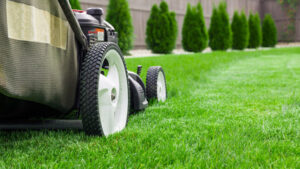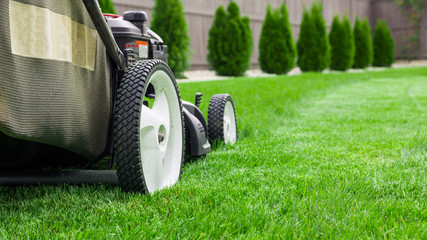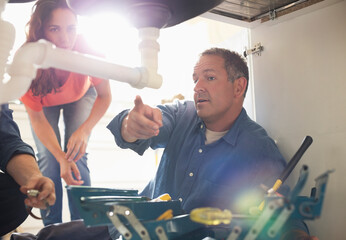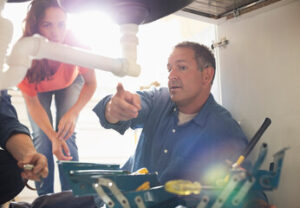A well-maintained lawn enhances the beauty of any property. It creates a welcoming atmosphere and increases curb appeal. Proper Jupiter Lawn Care ensures that grass remains lush and green throughout the year. Healthy lawns also prevent soil erosion and improve air quality.
Regular mowing is essential for maintaining an even and healthy lawn. Cutting the grass to the right height promotes stronger root growth. Taller grass shades the soil, reducing moisture loss and weed growth. Mowing at consistent intervals encourages uniform growth.
Watering plays a key role in lawn health. Deep and infrequent watering encourages deep root development. Early morning watering reduces evaporation and allows the grass to dry before nightfall. Overwatering can lead to shallow roots and increased vulnerability to pests.
Proper fertilization supports healthy grass growth. Nutrients such as nitrogen, phosphorus, and potassium are essential for strong roots and vibrant color. Slow-release fertilizers provide a steady supply of nutrients over time. Applying fertilizer during the growing season maximizes absorption.
Aeration improves soil structure and nutrient absorption. Compact soil restricts root growth and limits water infiltration. Core aeration removes small plugs of soil, creating space for air, water, and nutrients. Aerating once or twice a year enhances root health and lawn resilience.
Overseeding helps to thicken the lawn and reduce bare spots. Spreading grass seed over existing turf fills in gaps and promotes a uniform appearance. Overseeding improves lawn density and resistance to disease. Choosing a seed blend suited to the local climate enhances results.
Controlling weeds is crucial for maintaining a uniform lawn. Weeds compete with grass for nutrients, water, and sunlight. Pre-emergent herbicides prevent weed seeds from germinating. Spot treatment with selective herbicides targets existing weeds without harming grass.
Pest control protects the lawn from damage. Insects such as grubs and chinch bugs feed on grass roots and stems. Natural and chemical treatments can reduce pest populations. Maintaining healthy grass strengthens its ability to resist pest damage.
Thatch removal improves lawn health by allowing air and water to reach the soil. Thatch is a layer of dead grass and organic matter that accumulates on the soil surface. Dethatching tools or machines remove this layer. Removing excess thatch encourages deeper root growth and improved water absorption.
Sunlight exposure influences grass health and growth patterns. Lawns in shaded areas may require shade-tolerant grass varieties. Trimming trees and shrubs allows more sunlight to reach the grass. Increasing sunlight exposure improves photosynthesis and overall lawn health.
Lawn edges create a clean and defined look. Edging along sidewalks, driveways, and garden beds enhances the lawn’s appearance. Manual or powered edging tools create straight, crisp lines. Defined edges prevent grass from encroaching into unwanted areas.
Mulching grass clippings returns nutrients to the soil. Leaving clippings on the lawn after mowing provides a natural source of nitrogen. Mulching reduces the need for additional fertilizers. It also improves soil moisture retention and structure.
Seasonal care ensures that the lawn remains healthy year-round. In spring, raking and aerating prepare the lawn for new growth. Summer care focuses on consistent watering and pest control. Fall overseeding and fertilization strengthen roots for winter.
Soil testing identifies nutrient deficiencies and pH imbalances. Test kits provide information about the soil’s composition. Adjusting fertilizer and lime applications improves soil quality. Healthy soil supports strong grass growth and disease resistance.
Natural lawn care methods reduce environmental impact. Compost and organic fertilizers provide nutrients without synthetic chemicals. Beneficial insects and nematodes control pests naturally. Eco-friendly practices improve soil health and biodiversity.
Disease prevention starts with proper lawn maintenance. Fungal infections and root rot thrive in poorly drained soil. Improving drainage and aeration reduces moisture buildup. Removing infected grass prevents the spread of disease.
Grass type selection influences lawn maintenance requirements. Cool-season grasses thrive in mild temperatures, while warm-season varieties prefer heat. Mixing grass types creates a balanced lawn that adapts to changing conditions. Professional guidance helps select the best variety for the environment.
Water conservation benefits both the lawn and the environment. Installing rain sensors prevents overwatering. Drip irrigation and soaker hoses deliver water directly to the roots. Efficient watering methods reduce water waste and promote healthy growth.
Ground cover alternatives reduce lawn maintenance. Clover, creeping thyme, and ornamental grasses provide low-maintenance options. These plants require less water and fertilization. Mixing ground covers with grass creates visual interest and reduces mowing frequency.
Bare patch repair restores the lawn’s uniform appearance. Raking the area and adding topsoil create a suitable base for new seed. Keeping the area moist encourages germination. Overseeding and proper care fill in patches and prevent further thinning.
Fertilizer timing affects grass health and growth. Early spring and late fall are ideal times for fertilization. Applying fertilizer during active growth promotes nutrient absorption. Slow-release formulas provide consistent nourishment over time.
Moss control improves lawn appearance and health. Moss thrives in shaded, compacted, and acidic soil. Aerating, improving drainage, and adjusting pH levels reduce moss growth. Removing moss manually or with treatment restores grass dominance.
Lawn rolling smooths uneven surfaces and improves soil contact with grass roots. Overuse can compact the soil and limit root growth. Light rolling after seeding encourages seed-to-soil contact. Avoiding heavy rolling preserves soil structure.
Slope management prevents soil erosion and runoff. Planting grass and ground cover on slopes stabilizes the soil. Mulching and straw matting protect against erosion during heavy rains. Strong root systems secure the soil and prevent loss.
Heat and drought stress weaken grass and reduce color. Deep watering and proper mowing height help grass withstand heat. Avoiding mowing during peak heat prevents additional stress. Dormant grass recovers when cooler temperatures return.
Pet damage creates bare spots and discoloration. Training pets to use designated areas reduces lawn damage. Rinsing areas with water dilutes nitrogen from pet urine. Reseeding damaged spots restores lawn appearance.
Heavy foot traffic compacts soil and damages grass blades. Creating walkways or stepping stones reduces stress on the lawn. Aeration and overseeding repair compacted areas. Directing traffic to designated paths protects lawn health.
Improving soil structure enhances grass growth and resilience. Organic matter such as compost and peat moss improves soil texture. Looser soil promotes better root penetration and nutrient absorption. Healthy soil supports thicker, greener grass.
Shade-tolerant grass varieties maintain color and density in low-light areas. Fine fescue and ryegrass perform well in partial shade. Increasing light exposure through pruning improves grass health. Proper watering and fertilization support shaded lawns.
Natural weed control methods reduce chemical use. Vinegar, boiling water, and hand pulling remove weeds without harming grass. Corn gluten meal prevents seed germination naturally. Consistent mowing and watering reduce weed growth.
Soil compaction reduces water and nutrient absorption. Aerating and adding organic matter improve soil structure. Looser soil promotes better drainage and root expansion. Healthy roots increase lawn density and resistance to stress.
Regular maintenance keeps the lawn healthy and vibrant. Consistent mowing, watering, and fertilization support strong growth. Preventative care reduces pest and disease risks. A well-maintained lawn enhances outdoor living spaces and property value.


